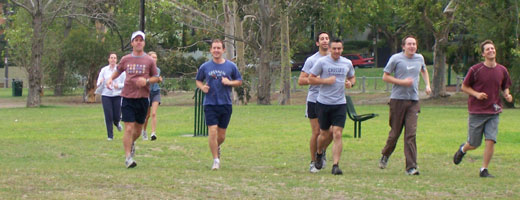Tips, news & views
One of the first things to do is ensure that you have set realistic, achievable and measurable goals. You are setting yourself up for failure if your goals are neither realistic or achievable and if they are not measurable how will you ever know if you've reached them?
Next, you have to determine the best way to achieve your goals. In relation to your health & fitness, here are a few tips: always eat fresh, healthy foods, get active, educate yourself and consider employing a health & fitness professional.
An important aspect of achieving your goals that is often overlooked is accountability. Who is going to make sure you are staying on track? Who is going to help you through the tough times? Who is going to give you a kick when you don't do the right thing? It's imperative that you have a support structure in place to help you achieve your goals. This can be your partner, a family member, a friend or perhaps a personal trainer.
Being accountable for your actions will help you reach your goals.
We can help. Contact us now to find out how.









Post a Comment
Create a Link
<< Home